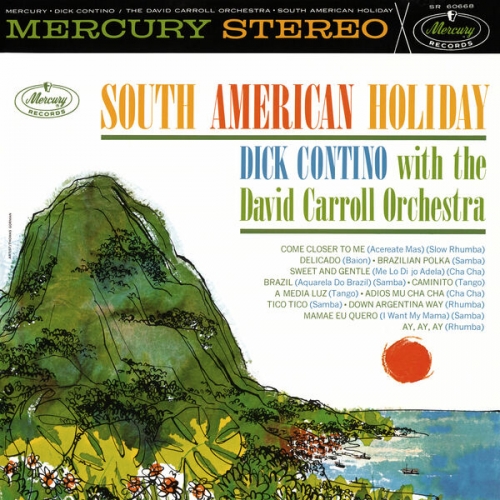London Baroque, Charles Medlam - Vivaldi - Suonate da Camera a tre (2000)

Artist: London Baroque, Charles Medlam
Title: Vivaldi - Suonate da Camera a tre
Year Of Release: 2000
Label: BIS
Genre: Classical
Quality: FLAC (image+.cue,log,scans)
Total Time: 02:07:55
Total Size: 775 Mb
WebSite: Album Preview
Tracklist: Title: Vivaldi - Suonate da Camera a tre
Year Of Release: 2000
Label: BIS
Genre: Classical
Quality: FLAC (image+.cue,log,scans)
Total Time: 02:07:55
Total Size: 775 Mb
WebSite: Album Preview
CD 1:
[1]-[5] Trio Sonata in G minor, No.1
[6]-[9] Trio Sonata in E minor, No.2
[10]-[13] Trio Sonata in C major, No.3
[14]-[18] Trio Sonata in E major, No.4
[19]-[22] Trio Sonata in F major, No.5
[23]-[26] Trio Sonata in D major, No.6
[27]-[30] Trio Sonata in E flat major, No.7
[31]-[34] Trio Sonata in D minor, No.8
[35]-[38] Trio Sonata in A major, No.9
CD 2:
[1]-[3] Trio Sonata in B flat major, No.10
[4]-[7] Trio Sonata in B minor, No.11
[8] Trio Sonata in D minor, 'La Folia', No.12
[9]-[11] Trio Sonata in B flat major, Op.5, No.17
[12]-[14] Trio Sonata in G minor, Op.5, No.18
[15]-[16] Sonata 'Al Santo Sepolcro' in B minor
[17]-[18] Sonata 'Al Santo Sepolcro' in E flat major
[19]-[22] Sonata for violin and basso continuo, Op.2, No.3
[23]-[24] Concerto in C major
Performers:
London Baroque
Ingrid Seifert, violin
Richard Gwilt, violin
Charles Medlam, violoncello
Terence Charlston, harpsichord, chamber organ
Irmgard Schaller, viola
We are so used to the absolute stylistic assurance of Vivaldi's music, that coming face-to-face with his tentative apprentice-piece is something of a shock. In his 12 Op. 1 Trio Sonatas, first published in 1705, the young Vivaldi shows himself to be an unashamed neo-Corellian. There would be scant interest in these works today if they were merely slavish imitations. But of course they're not. Vivaldi takes Corelli's forms and vocabulary and moves them on a stage. He does not make the rigid distinction between the sonata da chiesa and da camera which Corelli did, and a number of his sonatas are clearly mixed in style. And when he's feeling confident he can be harmonically audacious, technically demanding and melodically generous to the bass line. London Baroque understand young Vivaldi well, and they bring a real sense of discovery to these pieces. Without undue exaggeration they positively relish the first signs of Vivaldi's emerging personality, gently pointing his early interest in the sequence, celebrating his wit in the sawing cello accompaniment to the Allemanda of the fourth sonata, and indulging his taste for virtuoso display in the dazzling La folia Variations.
One of the problems with Vivaldi's Op. 1 is that the 12 sonatas are about 25 minutes too long for a single CD. So some imagination is required to provide some interesting fillers for the second disc. London Baroque get it just right. For the sake of completeness we are offered Vivaldi's two other published trio sonatas (1716), and for a bit of context there's also a Corelli-inspired violin sonata from Op. 2. They also include three works requiring a quartet of strings (for which the ensemble is enlarged to include the violist Irmgard Schaller). The Concerto in C major, one of dozens of such pieces, is remarkable for its finale a pulsating French chaconne which the players endow with positively Italian gusto. Best of all are the two sonatas, Al Santo Sepolcro (RV130 and RV169). Perhaps written for candlelit vigils, they reveal a more profound side to Vivaldi's character, with suspension-laden preludes (really milked by Ingrid Seifert and Richard Gwilt) leading to gloriously argumentative fugues.
London Baroque are on excellent form here. Slightly edgy in tone and a shade cold from time to time, they are nevertheless genuinely enthused by the music. I always know I'm in safe hands when each piece in a collection such as this really seems to have a distinct character of its own. These are carefully considered performances underwritten by continuo playing (on harpsichord and organ) of inventive brilliance. Recommended.
One of the problems with Vivaldi's Op. 1 is that the 12 sonatas are about 25 minutes too long for a single CD. So some imagination is required to provide some interesting fillers for the second disc. London Baroque get it just right. For the sake of completeness we are offered Vivaldi's two other published trio sonatas (1716), and for a bit of context there's also a Corelli-inspired violin sonata from Op. 2. They also include three works requiring a quartet of strings (for which the ensemble is enlarged to include the violist Irmgard Schaller). The Concerto in C major, one of dozens of such pieces, is remarkable for its finale a pulsating French chaconne which the players endow with positively Italian gusto. Best of all are the two sonatas, Al Santo Sepolcro (RV130 and RV169). Perhaps written for candlelit vigils, they reveal a more profound side to Vivaldi's character, with suspension-laden preludes (really milked by Ingrid Seifert and Richard Gwilt) leading to gloriously argumentative fugues.
London Baroque are on excellent form here. Slightly edgy in tone and a shade cold from time to time, they are nevertheless genuinely enthused by the music. I always know I'm in safe hands when each piece in a collection such as this really seems to have a distinct character of its own. These are carefully considered performances underwritten by continuo playing (on harpsichord and organ) of inventive brilliance. Recommended.






![Patrick Gibin - Let It Go / Joint Purpose / In This Together (The Joaquin Joe Claussell Remixes) (2025) [Hi-Res] Patrick Gibin - Let It Go / Joint Purpose / In This Together (The Joaquin Joe Claussell Remixes) (2025) [Hi-Res]](https://www.dibpic.com/uploads/posts/2026-01/1767515269_a0142682780_10.jpg)

